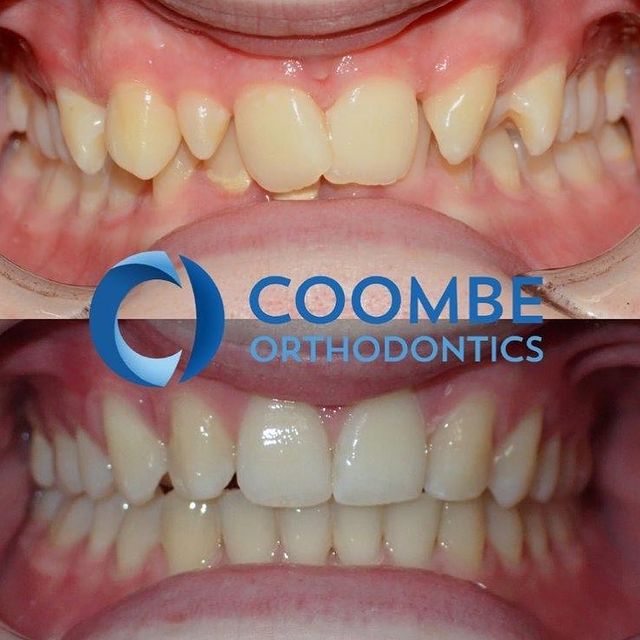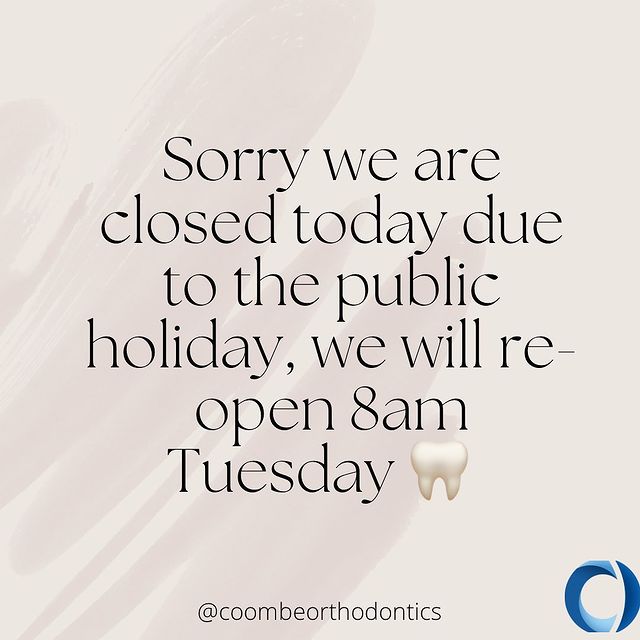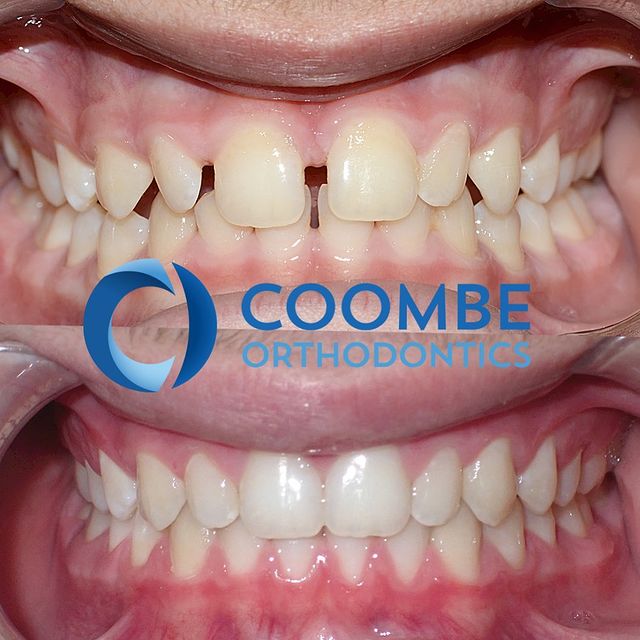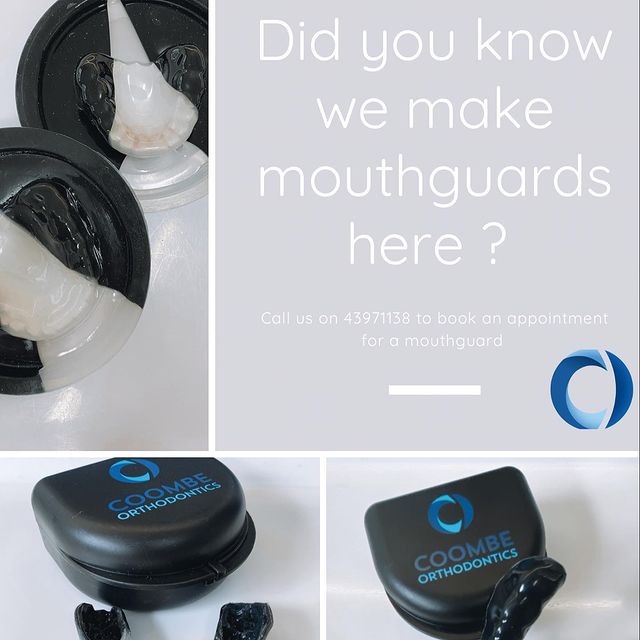Jun 24, 2025
Signs your child needs to see an orthodontist (and when to book their first visit)

As a parent, it’s natural to wonder whether your child’s smile is developing correctly. You might ask questions like: when should my child see an orthodontist? and what signs indicate they may need braces? In this reassuring guide, we’ll answer those questions and more. We’ll explain the ideal age for an orthodontic check-up, highlight key signs of orthodontic issues in children, discuss early interceptive treatments, and review kid-friendly options like clear aligners (Invisalign® and Angel Aligners) and braces. By understanding these points, you can make informed decisions to support your child’s healthy, confident smile.
When should my child see an orthodontist?
Orthodontic experts recommend children get their first orthodontic evaluation at an early age – often around age 7. In Australia, the Australian Society of Orthodontists suggests having a check-up by age 7, even though most kids won’t need treatment that young. This early visit is usually just an assessment to monitor how your child’s teeth and jaws are growing. It doesn’t mean braces will be applied right away – in fact, many children won’t begin treatment until around 11–14 years old, when more adult teeth have come in. However, an early orthodontic check allows a specialist to spot any developing issues and step in at the optimal time if intervention is needed.
During the first visit, the orthodontist will examine your child’s bite, jaw alignment, and tooth development. They may take x-rays or use digital scans to see the positions of adult teeth that haven’t emerged yet. By evaluating at age 7-10, the orthodontist can predict if any problems like crowding, bite misalignment, or jaw growth issues are on the horizon. If everything looks fine, they might simply schedule periodic check-ups to keep an eye on things as your child grows. If an issue is spotted, the orthodontist can plan for the appropriate time to begin treatment – sometimes starting early (more on early treatment below), or in other cases waiting until the teen years while taking preventive steps in the meantime.
Bottom line: Aim to book your child’s initial orthodontic consultation by age 7-10. Early assessments are quick, gentle, and informative, giving you peace of mind and a roadmap for the future.

What are the signs my child needs to see an orthodontist?
Even before age 7, certain warning signs might signal that your child could benefit from an orthodontic check-up. Keep an eye out for these common indicators of orthodontic issues:
- Early or late loss of baby teeth: If baby teeth fall out too early (before about age 5) or far later than usual, it may disrupt how adult teeth come in. This can lead to spacing problems or misalignment.
- Crowded or overlapping teeth: Teeth that are crowding together or growing in crooked often mean there isn’t enough space in your child’s jaw. Crowding is a clear sign that orthodontic treatment (like expanders or braces) might be needed to create proper space and alignment.
- Large gaps between teeth: Some spacing is normal as kids grow, but significant gaps (especially once adult front teeth erupt) could indicate that teeth aren’t fitting together correctly. An orthodontist can assess if the gaps are cause for concern.
- Difficulty biting or chewing: If your child has trouble biting into food or frequently complains that chewing is hard, it might point to a bite misalignment. Issues like overbite, underbite or crossbite can prevent the teeth from meeting properly, making eating challenging.
- Teeth that don’t meet correctly: When your child bites down, their teeth should fit together evenly. Upper and lower teeth that don’t touch or line up (for example, front teeth that protrude or a jaw that shifts to one side) are signs of a malocclusion (bad bite). This often benefits from early correction to improve function and prevent uneven wear.
- Mouth breathing or frequent snoring: If you notice your child mainly breathes through their mouth or snores at night, it could be related to how their jaw or palate is shaped. Mouth breathing isn’t always caused by orthodontic issues, but sometimes a narrow upper jaw or retruded lower jaw can contribute to airway constriction. An orthodontist can determine if an expander or other treatment might help open the airway and encourage better nasal breathing.
- Thumb sucking or dummy (pacifier) use beyond age 4: Prolonged thumb-sucking or pacifier habits can gradually push the front teeth outward and affect the shape of the palate. If your child is still using these comforting habits past toddler age, an orthodontic check is wise. Even if the habit has stopped, a specialist can check that it hasn’t caused any lasting changes to tooth alignment or bite.
- Speech difficulties: Lisps or difficulty pronouncing certain sounds (like “s” or “th”) can sometimes be related to the positioning of teeth or jaws. For example, a very narrow upper jaw or protruding teeth might contribute to speech issues. An orthodontist can work alongside speech therapists to address the underlying structural causes if needed.
These signs don’t always mean immediate treatment is required, but they are good reasons to have an orthodontist evaluate your child’s development. Early detection of such issues can ensure that if intervention is needed, it’s done at the right time for the best outcome.
Why early orthodontic assessment matters
An early orthodontic assessment (around age 7-10) can be extremely beneficial, even if your child hasn’t shown major issues yet. The goal of early evaluation is preventive: to catch subtle problems before they become more serious. Here are a few key benefits of seeing an orthodontist sooner rather than later:
- Guide jaw growth: In younger children, the jaw bones are still growing and relatively soft. Orthodontists can use small interventions to guide the growth of the jaws and ensure the upper and lower jaw develop in harmony. For example, if the upper jaw is too narrow, a device called a palatal expander can gradually widen it to prevent a crossbite and improve breathing space.
- Intercept problems early: Sometimes, addressing a problem early makes the subsequent treatment much easier. Early orthodontic treatment (often called Phase 1 treatment or interceptive treatment) is done while some baby teeth are still present, targeting specific issues that shouldn’t wait. By correcting issues like a severe crossbite or protruding front teeth at a young age, you reduce the need for more complex treatment later on. Appropriate early treatment lays the foundation for a healthy, well-aligned bite in the teen years and adulthood.
- Prevent future dental issues: Fixing alignment or bite problems can also protect your child’s oral health. For instance, reducing crowding makes it easier to brush and floss effectively (helping prevent cavities), and correcting a deep overbite can keep teeth from wearing down unevenly. Early orthodontic care may even help avoid tooth extractions or jaw surgery in the future by tackling problems while your child is still growing.
- Shorter treatment times later: When orthodontic issues are managed early, any treatment needed in the teen years is often more straightforward and quicker than it otherwise would have been. In some cases, early intervention can significantly reduce the time your child needs to wear braces in Phase 2 (the comprehensive treatment in adolescence).
- Boosted confidence: This is more of an emotional benefit, but it’s worth noting. Addressing glaring issues (like very protrusive front teeth) at a young age can save children from feeling self-conscious about their smile. It can also prevent potential injury – for example, front teeth that stick out are more susceptible to trauma during sports or play. An early fix can protect your child’s smile and self-esteem.
In summary, early orthodontic assessments are a proactive step. If the orthodontist finds no issues, you get peace of mind. If something does need attention, you have a head start on addressing it in the easiest and most effective way. Early checks truly set the stage for a lifetime of healthy smiles.
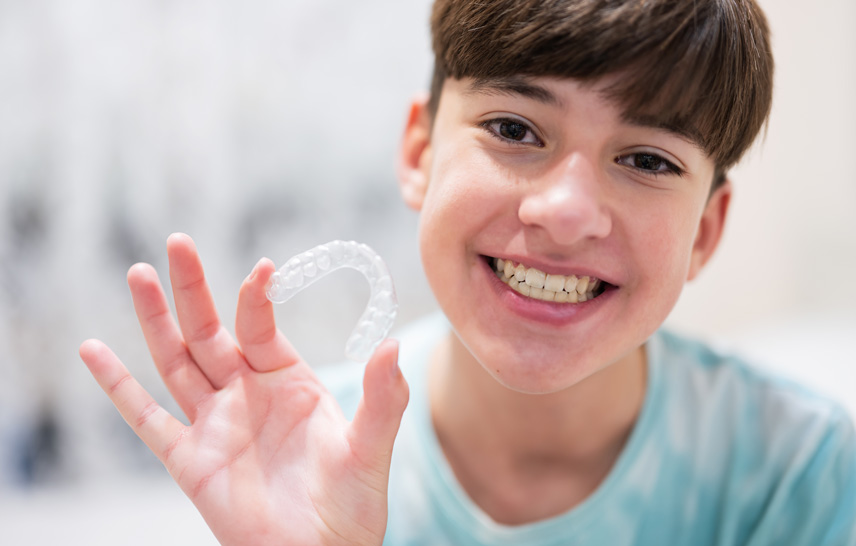
What is early interceptive orthodontic treatment?
“Early interceptive treatment” refers to orthodontic treatment that begins while a child still has some baby teeth, typically between ages 7 and 10. Unlike full treatment in the teenage years (when all adult teeth are in), interceptive treatment is a first phase aimed at correcting certain problems early to improve outcomes later. It’s also called Phase 1 treatment or early orthodontic treatment.
What does this mean in practice? During this phase, an orthodontist addresses specific issues that benefit from early action. Common examples include:
- Expanding a narrow jaw: If the upper jaw is too narrow (often causing a crossbite or crowding), an appliance called a palatal expander might be used around age 7-10. This device gently widens the upper arch, creating space for incoming teeth and improving the bite. Expanding early can prevent asymmetry and even help with breathing by opening the nasal passages.
- Correcting severe bites: For pronounced overbites or underbites, interceptive treatment might include devices or limited braces to modify jaw growth. For instance, a lower jaw that’s growing too slowly could be guided forward with a functional appliance while the child is young and growth can be influenced.
- Maintaining space for adult teeth: If a baby tooth is lost too early (due to decay or injury), adjacent teeth can drift and block the space for the adult tooth. Orthodontists can place space maintainers – small holding appliances – to preserve the gap until the adult tooth erupts. This avoids future crowding or impaction of teeth.
- Partial braces or aligners for front teeth: In some cases, a limited set of braces or even clear aligners (like Invisalign® First, a version of Invisalign® for young children) may be used in Phase 1. For example, if the top front teeth are jutting out and at risk of damage, a short early treatment can gently bring them back into better alignment. This not only protects the teeth but also improves appearance and confidence early on.
Interceptive treatments are typically small-scale and last about 6–12 months. After Phase 1 is done, the child goes into a resting period to allow more growth and tooth eruption. Later, a second phase of treatment in early adolescence may refine and finish aligning the bite (often with full braces or aligners once all adult teeth are in). Importantly, Phase 1 can make Phase 2 much easier – sometimes shortening the time needed in braces, or even eliminating the need for tooth extractions because space was created earlier.
Not every child will need interceptive treatment. Many kids are just monitored after their initial check-up until they’re ready for full treatment. But if your specialist orthodontist recommends an early intervention, it’s because the timing is ideal to fix a problem now rather than later. By cooperating with your child’s natural growth, interceptive orthodontics can achieve results that would be harder (or impossible) to get in the teen years when the jaw has stopped growing.
What are the treatment options for kids and teens?
One reassuring fact for parents today is that orthodontic treatment options have expanded. There are modern alternatives to the traditional “metal mouth” braces, and even traditional braces themselves have become sleeker and more comfortable. At Coombe Orthodontics, we offer a full range of kid-friendly treatments – from braces to clear aligners – to suit different needs and preferences. Here’s an overview of the options:

- Braces: Braces remain the most common and effective option for children and teenagers, especially for complex corrections. Braces consist of small brackets bonded to the teeth and connected by wires. Today’s braces come in various styles:
- Metal braces: the classic stainless-steel brackets, now smaller and more comfortable than in the past.
- Ceramic braces: tooth-colored or clear brackets that blend in with the teeth, popular with image-conscious teens who want a subtler look.
- Advanced braces: systems like Insignia™ or self-ligating braces use modern technology for potentially faster or more comfortable treatment. For example, self-ligating braces have special clips instead of elastic bands, resulting in less friction.
- Braces are reliable for all types of orthodontic problems – from mild spacing issues to significant jaw misalignments. They don’t rely on the patient’s discipline to work (since they’re fixed on the teeth), which can be an advantage for younger kids. Also, braces can treat cases that might be too complex for aligners alone. At Coombe Orthodontics, we have braces options suitable for children of all ages and can even make them fun (kids can choose colored bands for metal braces to show off their personality at appointments!).
- Clear aligners: Clear aligners are a removable, almost invisible alternative to braces. The most well-known brand is Invisalign®, and we are proud to offer both Invisalign® and Angel Aligners at Coombe Orthodontics. These systems use a series of custom-made, transparent plastic trays (aligners) that fit over your child’s teeth and gradually move them. For kids and teens who qualify, aligners have some great benefits:
- They are very discreet – most people won’t notice your child is wearing them, which can be a big confidence boost.
- They can be taken out for eating, brushing, and flossing, so oral hygiene and diet are easier than with fixed braces.
- They tend to be comfortable, with no metal wires or brackets to poke the cheeks or lips.
- Aligners work best for patients who will wear them responsibly for ~22 hours a day. For this reason, aligner treatment is often recommended for older children and teenagers, who have the maturity to keep them in and not lose them. In fact, clear aligners are incredibly popular among image-conscious teens who appreciate the freedom and invisibility they offer. There are even specially designed programs like Invisalign® First for younger kids (age ~6-10) and Invisalign® Teen for adolescents that include features to help with compliance (like wear-time indicators).
It’s important to note that while aligners can fix most mild to moderate issues, some complex cases are still better suited to braces. In some instances, we might use a combination of treatments – for example, a short phase of braces to correct a tricky issue followed by aligners to finish aligning. When you come in for a consultation, we will assess your child’s case and honestly recommend the option that best fits their needs, lifestyle, and your budget. - Other appliances: In addition to braces and aligners, orthodontists use a variety of specialized appliances for certain tasks. For example, palatal expanders (as discussed earlier) widen the upper jaw, and space maintainers hold gaps open for adult teeth. There are also habit appliances to discourage thumb sucking, and retainers used after treatment to keep teeth in place. Your orthodontist will explain if any of these are needed as part of your child’s plan.
In summary, there’s no one-size-fits-all solution in modern orthodontics. Clear aligners or braces, or sometimes a mix of both, could be recommended depending on what’s best for your child’s smile. The good news is that all these options can achieve beautiful results – the key is choosing the right approach with the guidance of a skilled orthodontist. At Coombe Orthodontics, we offer the latest technologies in both aligners and braces, so you can feel confident that your child will receive the ideal treatment for their situation.
Your next steps (and why choose Coombe Orthodontics)
If you’ve noticed any of the signs we discussed, or even if you’re just unsure about your child’s dental development, the best next step is to schedule a consultation with a Specialist Orthodontist. At Coombe Orthodontics, we make this process as easy and stress-free as possible. No referral is required from a dentist, and we offer free initial consultations for all new patients. This means you can get expert advice about your child’s smile with no obligation.
During your first visit to Coombe Orthodontics, our friendly team will:
- Assess your child’s smile, bite and jaw growth: We perform a thorough examination, including any necessary x-rays or 3D scans, to understand exactly how your child’s teeth are positioned and how their jaw is developing.
- Explain our findings in plain language: We’ll let you know whether everything looks normal or if we see any issues. Often, we might say “Let’s keep an eye on this and review again in 6-12 months.” If we do recommend treatment – whether now or in the future – we will clearly explain the what and why, so you and your child feel comfortable and informed.
- Outline a personalised treatment plan (if needed): Should your child need orthodontic treatment, we will create a custom plan tailored to their needs. This includes the recommended appliance (braces, Invisalign®, Angel Aligners, expander, etc.), an estimated timeline, and discussion of costs and payment plan options. We encourage questions and make sure you understand all aspects of the plan.
At Coombe Orthodontics, our philosophy is to treat patients like family. We never rush or pressure you into a decision. Instead, we focus on education and trust – our job is to give you the knowledge about your child’s orthodontic health and the available solutions. Any treatment we suggest is genuinely in your child’s best interest, and we’ll support you in whatever choice you make for their care.
With locations in Wahroonga and Toukley, NSW, we are convenient for families in the North Sydney and Central Coast areas. Our specialist orthodontists (led by Dr. Angela Coombe) have extensive experience in early treatment, traditional braces, and clear aligners for all ages. Whether your child ends up needing interceptive treatment now or just periodic check-ups until they’re older, you’ll be in expert hands with our team.
In conclusion, knowing the signs of potential orthodontic problems and the recommended timing for check-ups can save your child discomfort down the road. Early consultations allow us to set your child on the path to a healthy bite and beautiful smile. If you think it might be time for your child’s orthodontic assessment, feel free to reach out to Coombe Orthodontics for a free consultation. We’re here to guide you every step of the way, with a caring approach that will put both you and your child at ease as you begin your smile journey.
Remember, a confident smile can last a lifetime – and it often starts with that first orthodontist visit at the right time. By staying proactive and informed, you’re giving your child the best chance at a comfortable, happy, and healthy smile for years to come. We’re excited to partner with you in that process!



